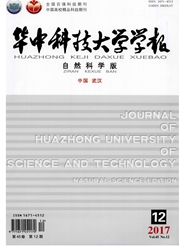

 中文摘要:
中文摘要:
Hand-biometric-based personal identification is considered to be an effective method for automatic recognition. However, existing systems require strict constraints during data acquisition, such as costly devices,specified postures, simple background, and stable illumination. In this paper, a contactless personal identification system is proposed based on matching hand geometry features and color features. An inexpensive Kinect sensor is used to acquire depth and color images of the hand. During image acquisition, no pegs or surfaces are used to constrain hand position or posture. We segment the hand from the background through depth images through a process which is insensitive to illumination and background. Then finger orientations and landmark points, like finger tips or finger valleys, are obtained by geodesic hand contour analysis. Geometric features are extracted from depth images and palmprint features from intensity images. In previous systems, hand features like finger length and width are normalized, which results in the loss of the original geometric features. In our system, we transform 2D image points into real world coordinates, so that the geometric features remain invariant to distance and perspective effects. Extensive experiments demonstrate that the proposed hand-biometric-based personal identification system is effective and robust in various practical situations.
 英文摘要:
英文摘要:
Hand-biometric-based personal identification is considered to be an effective method for automatic recognition. However, existing systems require strict constraints during data acquisition, such as costly devices,specified postures, simple background, and stable illumination. In this paper, a contactless personal identification system is proposed based on matching hand geometry features and color features. An inexpensive Kinect sensor is used to acquire depth and color images of the hand. During image acquisition, no pegs or surfaces are used to constrain hand position or posture. We segment the hand from the background through depth images through a process which is insensitive to illumination and background. Then finger orientations and landmark points, like finger tips or finger valleys, are obtained by geodesic hand contour analysis. Geometric features are extracted from depth images and palmprint features from intensity images. In previous systems, hand features like finger length and width are normalized, which results in the loss of the original geometric features. In our system, we transform 2D image points into real world coordinates, so that the geometric features remain invariant to distance and perspective effects. Extensive experiments demonstrate that the proposed hand-biometric-based personal identification system is effective and robust in various practical situations.
 同期刊论文项目
同期刊论文项目
 同项目期刊论文
同项目期刊论文
 期刊信息
期刊信息
